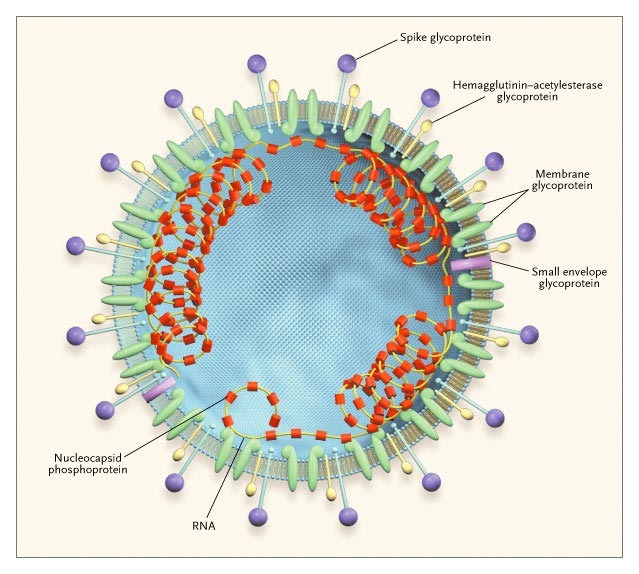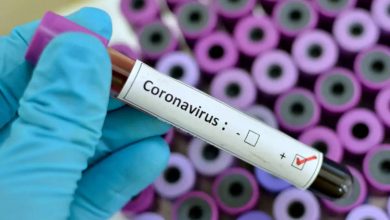Guidelines for Prevention of Corona Virus Disease 2019 (COVID-19) Spreading in Homes and Residential Communities
(This guide describes the home isolation assessment and provides information on preventive measures for family members, intimate partners, and caregivers of non-medical institutions with symptomatic and laboratory-confirmed COVID-19 infected persons in the new chapter )
This interim guide is based on the currently known epidemiology of COVID-19 and the spread of other viral respiratory infections. The U.S. Centers for Disease Control and Prevention (CDC) will update this interim guide as needed and with additional information.
Corona Viruses are a large class of viruses, some of which can cause illness in humans, while others can spread between animals (including camels, cats, and bats). In rare cases, animal corona Viruses may infect people exposed to infected animals and then spread among people, such as Middle East respiratory syndrome corona Virus (MERS-CoV) and severe acute respiratory syndrome corona Virus Virus (severe acute respiratory syndrome corona Virus, SARS-CoV) (English version), COVID-19 may also have this situation. This interim guide will help prevent the spread of this virus among people in families and other residential communities.
This interim guide applies to the following situations:
- Patients who have been diagnosed or suspected of COVID-19 infection but do not need to be hospitalized and can be treated at home (including those undergoing examination) Interim guide.
- Patients who have been diagnosed with COVID-19 infection and have been hospitalized and subsequently discharged home after being determined to be stable (see Interim Guidelines for Home Care for New Corona Virus (COVID-19) Patients Without Hospitalization 2019).
- Family members, close partners, and caregivers in non-medical settings of symptomatic, laboratory-confirmed patients with COVID-19 infection.
Back to Home:
Precautions for
Patients who have been diagnosed or suspected of COVID-19 infection but do not need to be hospitalized (including those being examined).
with
Patients who have been diagnosed with COVID-19 infection and have been hospitalized and are determined to be stable and discharged home.
Your medical staff and public health staff will assess whether you can treat at home. If it is determined that you do not need to be hospitalized and can be isolated at home, you will be monitored by staff at your local or state health department. You should follow these precautions until your health care provider, local or state health department tells you that you can resume normal activities.
- Except for medical treatment, please stay at home.
In addition to seeing a doctor, you should restrict travel. Do not go to work, school or public places. Avoid public transportation, carpooling, or taxis.
- Isolate yourself from other people and animals in the home.
Patient: Whenever you are at home, you should stay in a specific room and be isolated from the rest of the family. Also, if possible, you should use a separate toilet.
Animals: Do not touch pets or other animals when you are sick. For more information, see COVID-19 and Animals.
- Call before visiting.
Before you make an appointment, please call the medical staff and tell them that you are infected with COVID-19 or suspected to be infected. This will help clinic staff to take measures to prevent others from getting infected or exposed.
- Wear mask
You should wear a mask when approaching other people (such as sharing a room or in the same car) or pets, or before entering a clinic or hospital. If you cannot wear a mask for some reason, such as being unable to breathe, those who live with you should avoid sharing a room with you. They must wear masks once they enter your room.
- Block coughing and sneezing.
Cover your nose and mouth with a tissue when you cough or sneeze. Throw the used paper towels into a trash can with plastic bags; immediately wash your hands with soap and water for at least 20 seconds, or immediately use a alcohol-based hand sanitizer containing at least 60% to 95% alcohol for hand disinfection. Apply liquid to the entire hand and rub until hands are dry. When you see your hands are dirty, wash with soap and water first.
- Clean your hands often.
Wash hands often with soap and water for at least 20 seconds, or use alcohol-based hand sanitizer containing 60% to 95% alcohol for hand sanitization, apply the disinfectant to the entire hand, and knead until the hands are dry. When you see your hands are dirty, wash with soap and water first. Avoid touching your eyes, nose and mouth with unwashed hands.
- Avoid sharing personal items.
You should not share dishes, drinking glasses, cups, cutlery, towels or bedding with other people or pets in your home. Once these items are used, they should be thoroughly washed with soap and water.
- Clean all "high frequency contact" surfaces every day.
High-frequency contact surfaces include counters, tabletops, door handles, toilet utensils, toilets, mobile phones, keyboards, tablets, and bedside tables. In addition, clean any surfaces that may carry blood, feces, or body fluids. Use household cleaning sprays or wipes according to label instructions. The label contains instructions for safe and effective use of cleaning products, including precautions you should take when using the product, such as wearing gloves, and ensuring good ventilation during product use.
- Monitor your symptoms.
If your condition worsens (for example, difficulty breathing), see a doctor immediately. Before seeing a doctor, please call medical staff and tell them that you are infected with COVID-19 or suspected to be infected. Wear a mask before entering a clinic or hospital. This will help the clinic staff to take measures to protect the clinic or other people in the waiting room from infection or exposure. Ask your medical staff to call your local or state health department. Those who have been monitored or provide self-monitoring should properly follow the instructions of the local health department or occupational health professional.
If you have an emergency medical condition and need to call 911, please notify the dispatcher that you are infected or suspected of being infected with COVID-19. If possible, put on a mask before emergency medical services arrive.
- Termination quarantine.
Patients diagnosed with COVID-19 infection should continue to be quarantined at home until the risk of secondary transmission to others is considered to be reduced. Consult physicians, state and local health authorities on a case-by-case basis to make a decision to end family isolation measures.
Recommended precautions for family members, close partners, and caregivers in non-medical facilities.
Symptomatic, laboratory-confirmed patients with COVID-19 infection
or
Patient being examined
Family members, close partners, and caregivers in non-medical settings may be in close contact with 2 symptomatic, laboratory-confirmed patients with COVID-19 or patients undergoing examinations. Close contacts should monitor their health; if they develop symptoms suspected of COVID-19 (such as fever, cough, shortness of breath), call their medical staff immediately (see the United States Interim Guidelines for Personnel Risk Assessment and Public Health Management of the New Coronavirus (COVID-19) (English version).
Close contacts should also follow these recommendations:
- Make sure you understand and can help patients follow medical staff's medication and treatment instructions. You should help patients get basic home needs and support them in buying groceries, prescription drugs, and other personal needs.
- Monitor patients for symptoms. If the patient is getting worse, call their medical staff and tell them that the patient has a laboratory-confirmed COVID-19. This will help medical staff's clinics take steps to prevent other people in the clinic or waiting room from becoming infected. Ask the medical staff to call your local or state health department for additional guidance. If the patient has an emergency medical condition and you need to call Corona Helpline (as per your area), please notify the dispatcher that the patient is infected or suspected of being infected COVID-19
- Family members should stay in other rooms or be isolated from patients as much as possible. Family members should use separate bedrooms and bathrooms, if available.
- Non-essential guests are not allowed to come home.
- Family members should take care of any pets in the home. Do not touch pets or other animals when you are sick. For more information, see 2019-nCoV and Animals.
- Wear disposable masks and gloves when you touch or come into contact with the patient's blood, stool, or body fluids (such as saliva, sputum, nasal mucus, vomit, urine).
- Dispose of disposable masks and gloves after use. Do not reuse.
- When removing personal protective equipment, first remove and discard gloves. Then, immediately clean your hands with soap and water or alcohol-based hand sanitizer. Next, remove and discard the mask and immediately clean your hands again with soap and water or alcohol-based hand sanitizer.
- Avoid sharing household items with patients. Do not share dishes, drinking glasses, cups, cutlery, towels, bedding or other items. After the patient has used these items, they should be thoroughly washed (see "Cleaning Your Clothes Thoroughly" below).
- Clean all "high-frequency contact" surfaces, such as counters, tabletops, door handles, toilet fixtures, toilets, mobile phones, keyboards, tablets and bedside tables, daily. Also, clean any surfaces that may have blood, stool, or body fluids.
- Use household cleaning spray or wipes according to label instructions. The label contains instructions for the safe and effective use of cleaning products, including precautions you should take when using the product, such as wearing gloves, and ensuring good ventilation during use of the product.





0 Comments